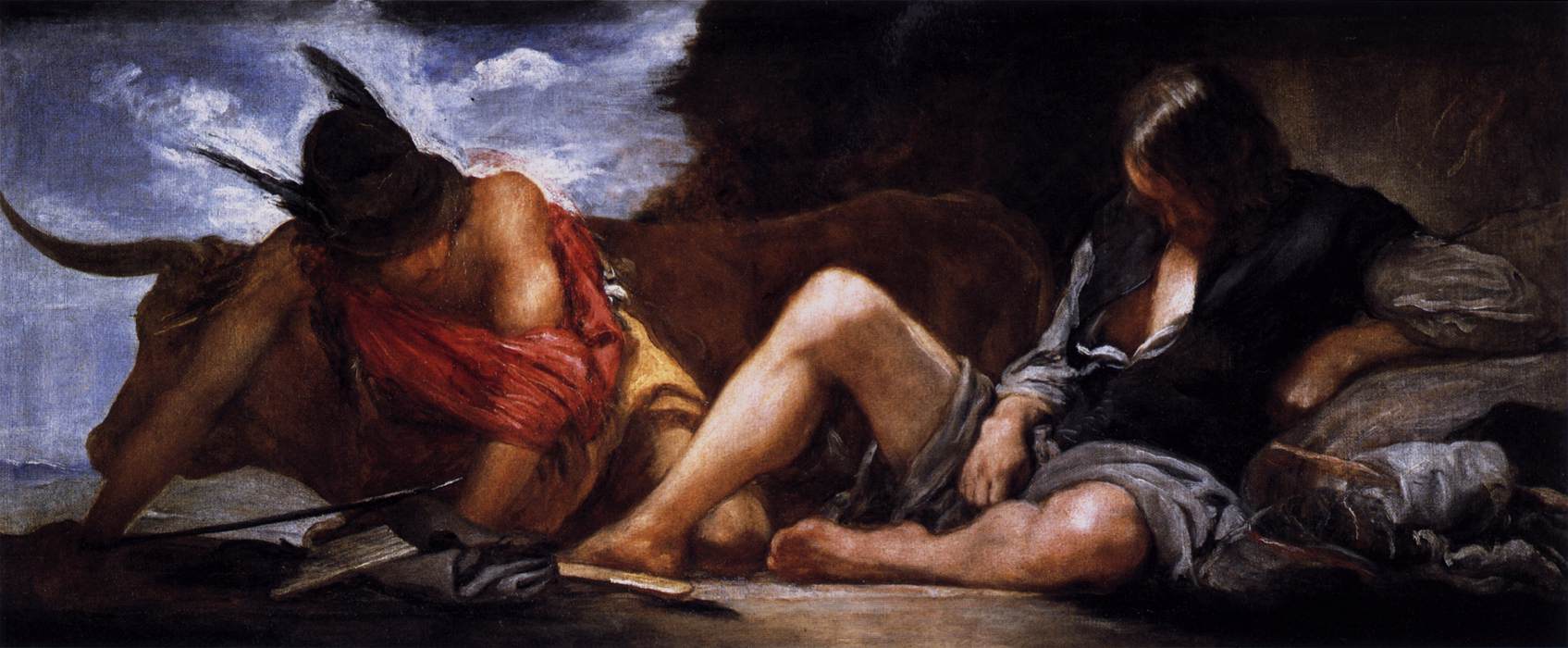Description
Mercury and Argus is a masterpiece by the renowned Spanish painter Diego Rodríguez De Silva Y Velázquez, who is considered one of the greatest exponents of Baroque art. Originally 127 x 248 cm, this painting stands out for its unique artistic style, masterful composition and use of colour.
Velázquez's artistic style is characterized by his ability to capture reality with astonishing precision. In Mercury and Argus, this ability is evident in the detailed rendering of the characters and setting. Every fold of clothing, every wrinkle in the skin, and every detail in the landscape are carefully painted, creating a sense of breathtaking realism.
The composition of the work is another interesting aspect to highlight. Velázquez uses a triangular arrangement to organize the elements on the canvas. At the center of the painting is Mercury, the messenger of the gods, who is depicted standing and looking directly at the viewer. Around him are other characters, including Argus, a multi-eyed giant who is being entertained by Mercury. This triangular arrangement creates visual balance and draws the viewer's attention to the focal point of the work.
As for color, Velázquez uses a soft and subtle palette in Mercury and Argus. Earthy tones and muted colors predominate, contributing to the feeling of serenity and melancholy perceived in the painting. Colors are applied in loose, flowing brushstrokes, adding dynamism to the work and creating a sense of movement.
The history of the painting is also fascinating. Mercury and Argus is inspired by Greek mythology and tells the story of how Mercury killed the giant Argus to free the nymph Io. This story is depicted symbolically in the painting, with Mercury entertaining Argus by playing his flute while Io, in the form of a cow, watches in the background. This mythological representation adds an element of mystery and depth to the work.
Finally, there are little-known aspects of the Mercury and Argus that are worth mentioning. For example, this painting is believed to have been commissioned by King Philip IV of Spain to decorate his residence at the Buen Retiro Palace in Madrid. In addition, it has been suggested that Velázquez represented himself in the figure of Mercury, which adds a self-referential element to the work.
In summary, Velázquez's Mercury and Argus is a fascinating painting that stands out for its artistic style, its composition, its use of color and its mythological history. This Spanish Baroque masterpiece continues to captivate viewers with its realism and ability to convey emotions through painting.

